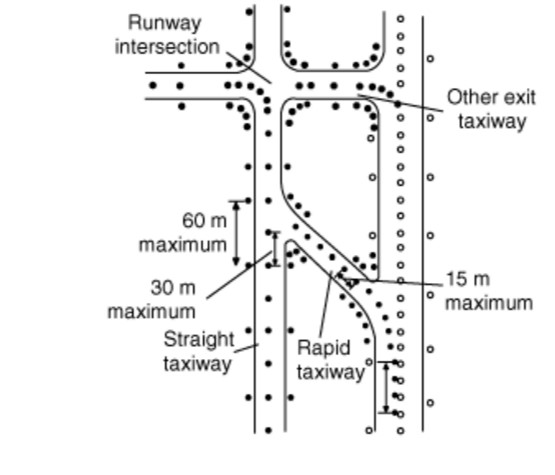The placement of taxiway edge lights and taxiway centerline lights is crucial for providing clear guidance to pilots while taxiing on the ground.
Spacing between taxiway edge lights and taxiway centerline lights can vary depending on factors such as:
- the curvature of the taxiway,
- the speed of aircraft expected to use the taxiway, and
- the visibility conditions.
Taxiway edge lights are typically placed along both sides of the taxiway at regular intervals. The standard placement is usually between 30 meters to 60 meters. Maximum allowed spacing between taxiway edge lights is 60 meters. However, on curved sections of the taxiway, the spacing may be adjusted to ensure adequate visibility and guidance for pilots. Taxiway edge lights are typically blue in color and are aligned to create a continuous visual reference for pilots.
Taxiway centerline lights are usually installed along the centerline of the taxiway at regular intervals to provide guidance to pilots. The standard spacing between centerline lights is typically between 7.5 meters to 30 meters. Maximum allowed spacing between taxiway centerline lights is 30 meters. However, this spacing may be adjusted on curved sections of the taxiway to maintain alignment with the taxiway centerline. Taxiway centerline lights are typically green in color and help pilots maintain alignment with the taxiway centerline, especially during periods of low visibility.

Taxiway centerline lights at curves
- Radius of curve up to 400 m, light spacing 7.5 m
- Radius of curve between 401 m and 899 m, light spacing 15 m
- Radius of curve 900 m or greater, light spacing 30 m